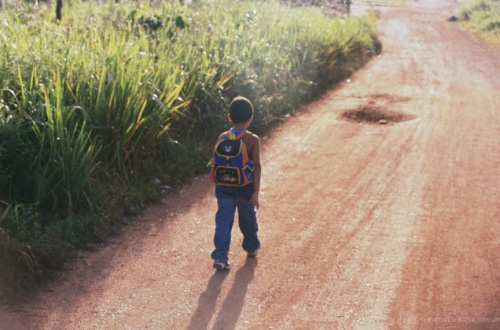What Does the Sudden Influx of Unaccompanied Minors from Central America Mean for Local Communities?

Some young children have been known to walk dozens of miles at a time without rest, often sleeping on sidewalks in small towns, just to make it to the American border.
August 27, 2014
In recent years, partly due to increasing hostility between drug cartels, the three countries that make up Central America’s “Northern Triangle” – Guatemala, Honduras, and El Salvador, have seen a huge spike in violence and gang rule, as well as a decrease in governmental authority. All three countries place in the world’s top five by murder rate. To escape from this crippling everyday violence and long-lasting poverty, tens of thousands of migrant children have made the 2,000-plus mile journey from their home countries to the American border, where non-Mexican children are temporarily distributed to a shelter or household. A large portion of migrant kids actually have family members living in the U.S. who can sponsor their care until deportation proceedings finish, which can take months or even years. Therefore, areas of the U.S. experiencing a large wave of child migration can expect to see a strain on their public services and government funds. This is especially true with regard to these areas’ public school systems: by federal law, public schools in the U.S. are required to provide an education to any child who needs it, despite their immigration status. An addition of poor child migrants (who generally don’t speak English and some of whom have never even attended a school in their lifetime) to existing American school systems would create situations that many school districts would have a hard time handling, especially if they aren’t used to dealing with a large number of non-English-speaking students. Since these children are mostly attempting to migrate via America’s southern border with Mexico, you’d think that they would mostly be clustered around the border area, but this isn’t necessarily the case. Unlike Mexican-Americans, a large portion of the diaspora of immigrants from these Central American countries is spread throughout the Northeast as well as the Southwest. Salvadoran-Americans are the predominant Latino nationality in much of the Washington, D.C. metro area (where several counties are preparing for a potential strain on their public school systems) as well as Long Island, and a significant pocket of them exists in Port Chester, just 30 minutes away from Ossining. Guatemalan-Americans are more spread out along the northeast corridor, but a large number of them live in the New York City suburbs, including Mount Kisco where federal immigration officers went through a building without notice and arrested about 20 people for deportation in 2007. Honduran-Americans are the least common of the three groups in the U.S., but still have a sizable population in and around New York City.
The vast majority of Ossining’s immigrant population is from South America, so the town isn’t nearly as susceptible to an influx of migrant children from Central America as other areas of the New York City metro area, but the possibility of at least a small effect on Ossining, especially its schools, is still real. Concurrently, many of the children who don’t have family living in the U.S. are housed in temporary military and charity shelters, but to safeguard these kids from human traffickers, the locations of these shelters are kept completely secret, and nobody working there is allowed to talk about their jobs – so the condition in which these children live in is a complete mystery.


